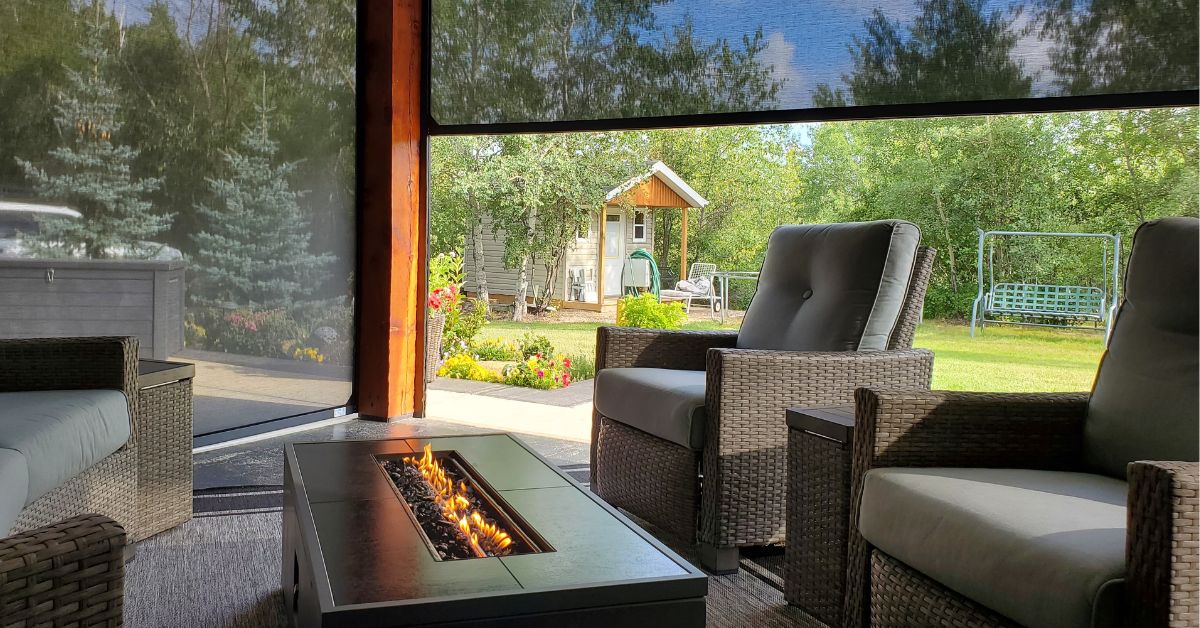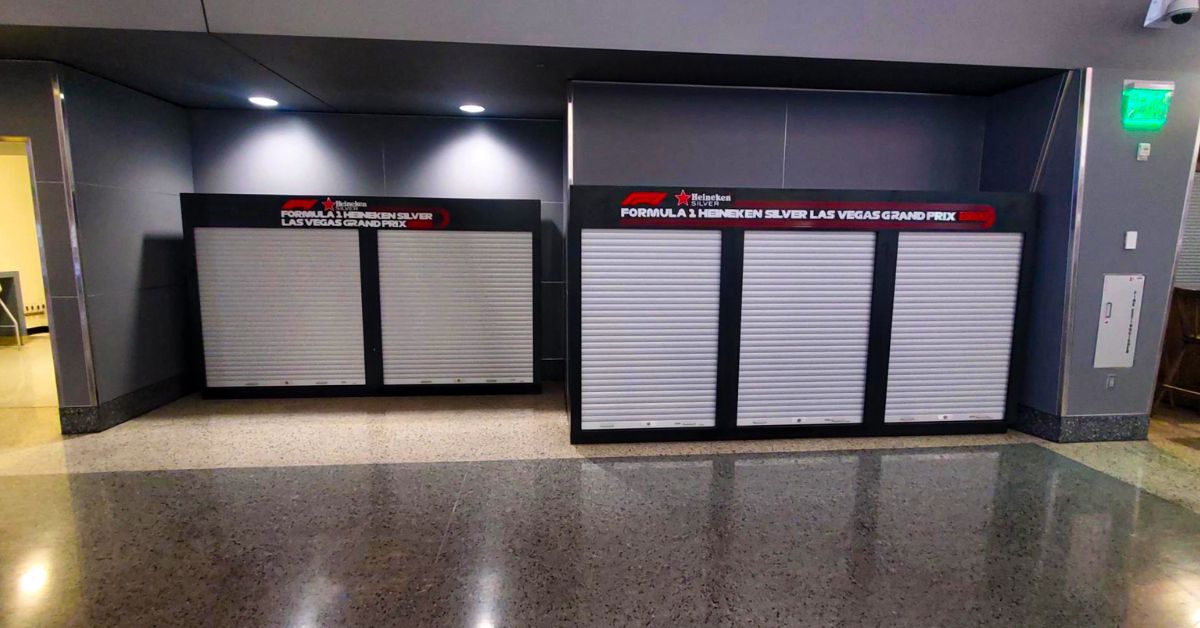Choosing the right window protection solution can significantly impact your property’s security, appearance, and functionality. Two popular options are security shutters and roll-up screens, each offering distinct advantages for different situations.
Maybe you’re securing a storefront or looking to protect your vacation home during hurricane season. You might simply want to enhance your property’s comfort and energy efficiency. Understanding the key differences between these two solutions helps you determine which aligns with your needs. Let’s compare roll-up shutters and screens to help you select the best option.
What Are Security Shutters?
Security shutters are heavy-duty protective barriers designed to shield windows, doors, and other openings from various threats. These robust systems serve as your first line of defense against break-ins and vandalism. Most security shutters are made from aluminum, which provides excellent protection while remaining lightweight and cost-effective.
Homeowners typically install security shutters for hurricane protection, home security, and privacy enhancement. Business owners rely on them to protect storefronts from break-ins, shield inventory during business off-hours, and maintain security in busy areas with heavy foot traffic.
What Are Roll-Up Screens?
Roll-up screens are mesh-based systems that provide protection from sun, wind, insects, and light rain. These systems roll up and down smoothly, offering flexible control over your comfort and climate.
The construction of roll-up screens typically involves weather-resistant fabrics, vinyl-coated polyester, or specialized mesh materials. These materials block UV rays, reduce glare, and allow air circulation while keeping insects out. Some premium options include solar-reflective coatings that significantly reduce heat gain.
Homeowners often install roll-up screens to create comfortable outdoor living spaces. They excel at extending the usability of porches, balconies, and outdoor dining areas. Business owners use roll-up screens for restaurant patios, retail storefronts seeking sun protection, and office buildings looking to reduce cooling costs. Hotels, cafes with outdoor seating, and residential complexes frequently install these systems to enhance guest and resident comfort.
Key Differences: Security
The security levels offered by shutters versus screens differ dramatically. Security shutters excel at deterring forced entry attempts with their solid construction and locking mechanisms. Most models can withstand significant impact and resist cutting tools, making them highly effective against break-in attempts.
Roll-up screens offer minimal security against forced entry. Their fabric or mesh construction can be easily cut or torn, making them unsuitable for high-security applications. However, they do provide privacy and can deter casual observers from seeing inside your property.
For properties requiring serious theft protection or those located in high-crime areas, security shutters clearly win this comparison. Roll-up screens work better when security concerns are minimal, and the primary goals involve comfort and protection from the elements.
Key Differences: Aesthetic Impact on Property
Security shutters and roll-up screens can both enhance the aesthetics of any structure, whether it’s commercial or residential. However, they do so in different ways.
Security shutters offer a sleek and modern solution that enhances both security and style. With their streamlined, non-bulky profile, these shutters integrate seamlessly into a building’s facade, preserving its aesthetic appeal while providing robust protection. Their contemporary designs not only complement various architectural styles but can also create a sophisticated look that boosts curb appeal. Additionally, their reassuring presence can enhance a property’s perceived security, which may contribute to increased property value in certain markets.
Roll-up screens maintain a cleaner, more residential appearance when retracted. They blend seamlessly with most architectural styles and often enhance a property’s visual appeal. When deployed, they create defined outdoor spaces that many find attractive.
Pentagon offers various design options for both systems, including custom colors, powder-coated finishes, and architectural integration features. The curtain design choices allow you to match your property’s aesthetic while maintaining functionality. Customization options include color matching, decorative slats, and integrated housing systems that minimize visual impact.
Key Differences: Resistance to Weather
Security shutters excel in extreme weather conditions. They can withstand hurricane-force winds, flying debris, and severe storms. Their solid construction makes them ideal for areas prone to severe weather events, and many models meet or exceed building codes for storm protection.
Roll-up screens primarily protect from UV rays, light rain, and wind. While they effectively block sun damage and create comfortable outdoor spaces, they cannot withstand severe weather conditions. Most manufacturers recommend retracting screens during storms to prevent damage.
For properties in hurricane zones, tornado alleys, or areas with frequent severe weather, security shutters provide essential protection that roll-up screens simply cannot match.
Key Differences: Ventilation Capabilities
Ventilation represents one of the most significant differences between these systems. Security shutters, while offering some perforated options, generally don’t provide substantial ventilation. Their primary design focuses on security and weather protection, which is why they don’t provide much airflow.
Roll-up screens excel at providing ventilation alongside insect protection. Their mesh or fabric construction allows air circulation while blocking bugs, pollen, and light rain. This makes them perfect for creating comfortable outdoor living spaces and reducing indoor cooling costs.
For applications where airflow is important, such as restaurant patios, screened porches, or areas requiring natural ventilation, roll-up screens clearly outperform security shutters.
Making the Right Choice for Your Property
When you look at the key differences, your decision comes down to your priorities. Choose security shutters if you need serious intrusion resistance, storm protection, noise reduction, and blackout privacy. They improve resilience, may lower insurance costs, and deliver clear, measurable security gains for homes and businesses.
On the other hand, choose roll-up screens if you want airflow, insect control, sun shading, and an open look that keeps spaces welcoming. They elevate comfort, extend living and dining areas, and support energy savings without changing the vibe of your property.
Upgrade Your Property With Roll-Up Shutters or Screens
The decision between security shutters and roll-up screens ultimately depends on understanding their key differences and how they align with your needs. Security shutters provide unmatched protection for high-risk situations, while roll-up screens excel at enhancing comfort and livability.
Consider your property’s location and your security concerns, aesthetic preferences, and long-term goals when making this important decision. Both systems offer valuable benefits, but the right choice varies based on your unique circumstances and priorities. Taking time to evaluate these factors ensures you’ll invest in the solution that best serves your property for years to come. Reach out to your local Pentagon dealer to learn more about roll-up security screens and how they can benefit your property.

